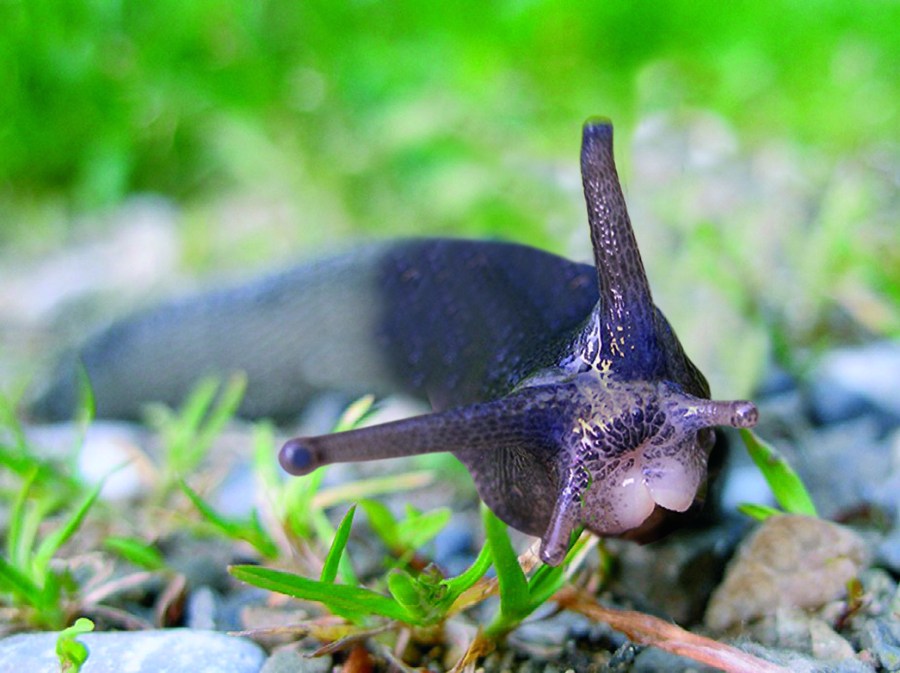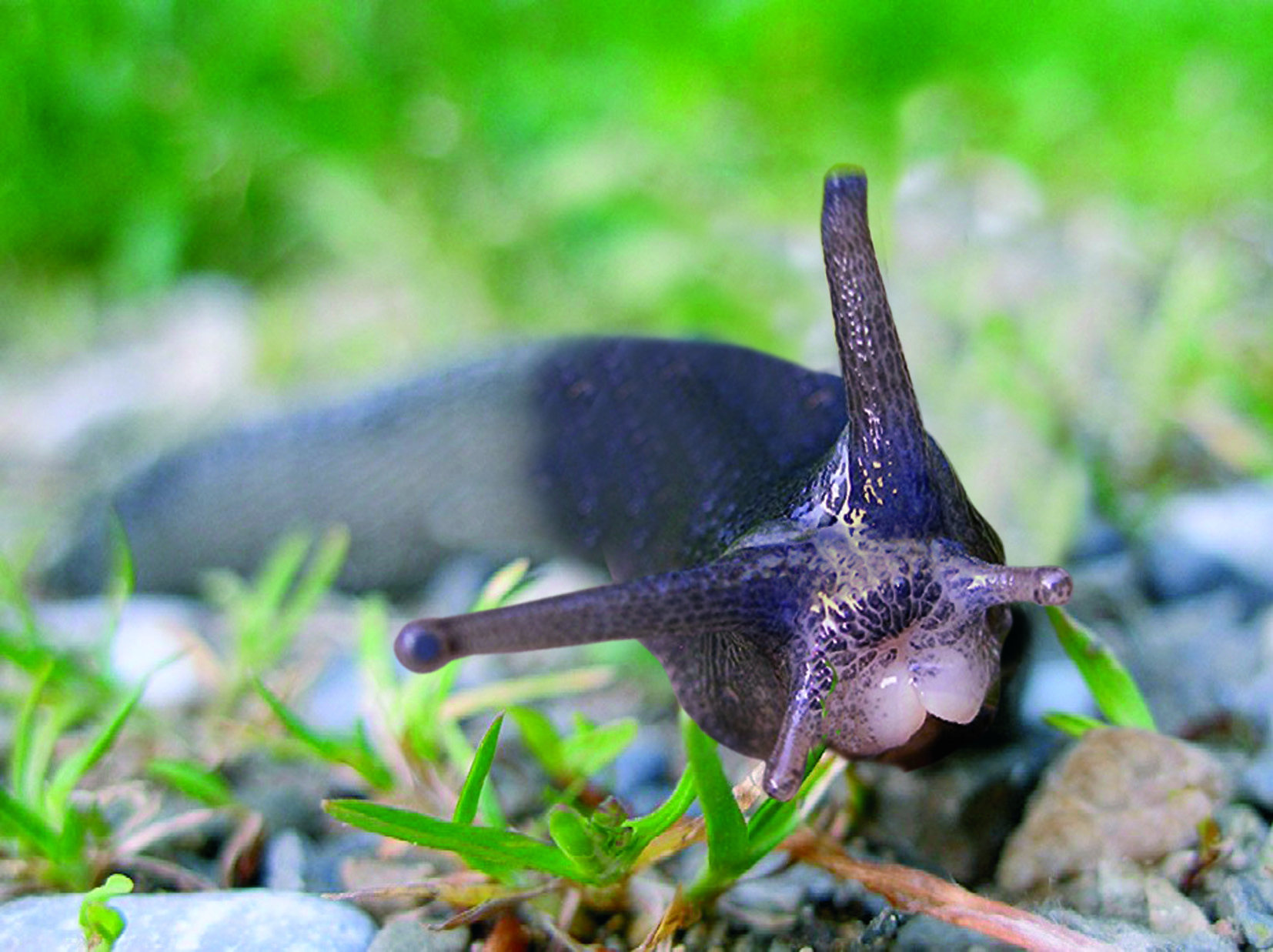The potential threat to crop establishment this autumn from slugs is significant, as could be the risk to raw water supplies from metaldhyde use. Frontier is committed to supporting not only industry led initiatives but also developing novel integrated approaches to managing this damaging pest.
Out-smarting the slug
With summer conditions continuing to favour slug survival, pressure this autumn is likely to be high. CPM finds out from Frontier’s Dr Paul Fogg how best to target the pest.
Keeping metaldehyde out of water bodies remains a key issue for the industry and water companies
By Lucy de la Pasture
Slugs are undoubtedly arable farming’s most destructive pest, with estimates from AHDB Cereals and Oilseeds that they have potential to cost the industry £100 million in crop losses in a high risk season.
With the stewardship spotlight firmly on metaldehyde, using the minimum amount of product to achieve slug control is the objective, says Frontier’s crop production specialist, Dr Paul Fogg. Favourable conditions at peak breeding times for the grey field slug, Deroceras reticulatum, last autumn and again this spring, coupled with a dampish summer to date, mean there are already high numbers of slugs being seen in crops.
With all the hallmarks of a big slug challenge ahead this autumn, understanding the pest, pollution pathways and targeting control are all key to keeping a lid on populations with minimal applications of molluscicide.
Whats changed?
As far as metaldehyde is concerned, it’s currently a case of ‘as you were.’ Metaldehyde remains available for use as the re-approval process continues and the outcome of the much delayed Defra consultation is still awaited. That means labels are likely to remain the same for usage this autumn.
Keeping metaldehyde out of water bodies remains a key issue for the industry and water companies. By 2018, as water companies start the process of finalising their business plans for the next five years, there needs to be a clear
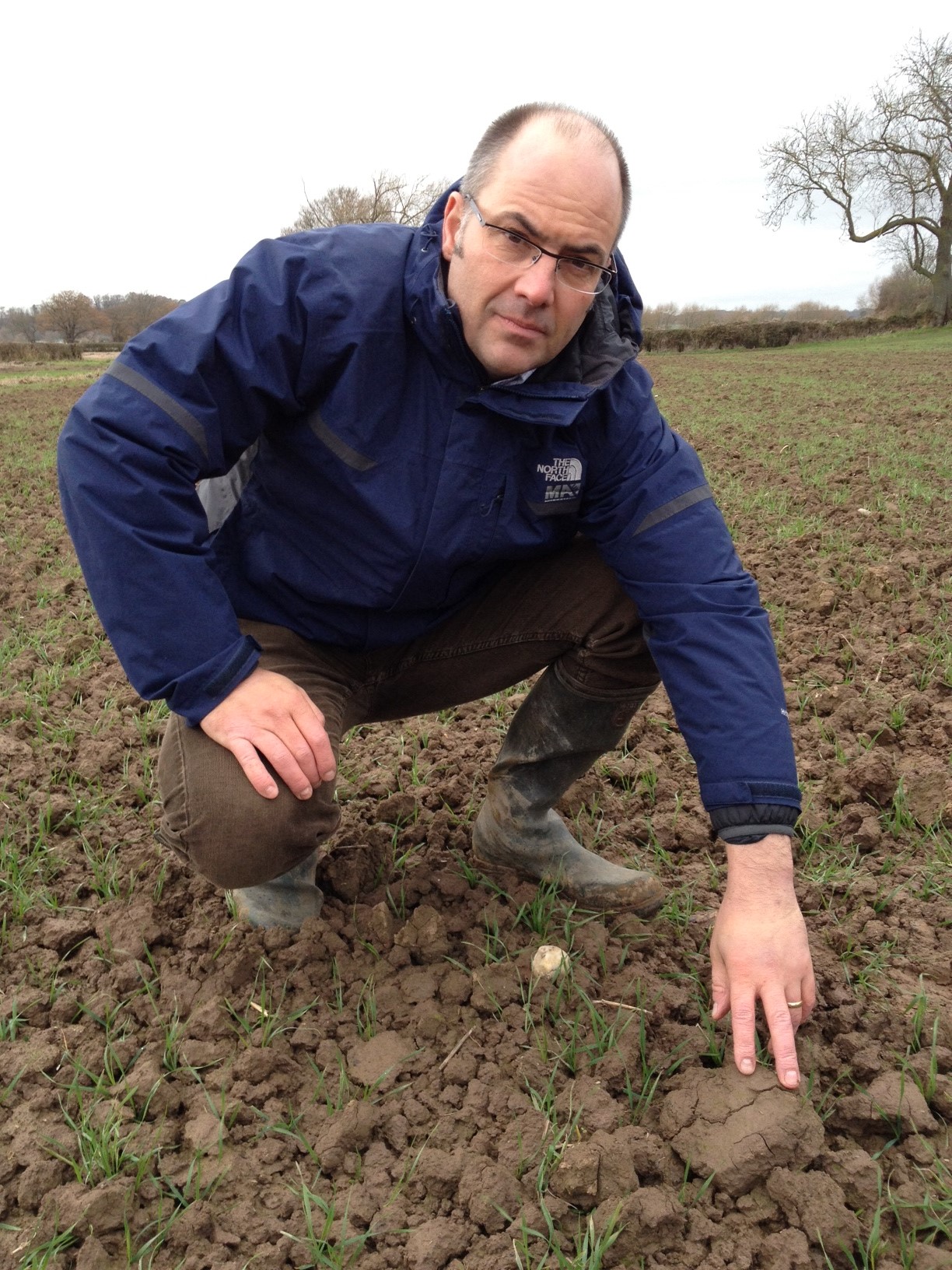
With the stewardship spotlight firmly on metaldehyde, use the minimum amount of product, advises Paul Fogg
indication that catchment management can effectively protect drinking water supplies, if metaldehyde is to avoid possible restrictions on use.
Product type is still very much part of the equation when it comes to using metaldehyde. Recent work by the water industry shows that formulation of metaldehyde pellets can have a big influence on the amount of leaching of the active, with an increase in losses of 10% from dry-processed pellets compared with wet-processed.
On the ferric phosphate front, the base of manufacturers with an approval has broadened, meaning there’ll be more choice in brands available and as a result, the market is likely to become more competitive.
What damage do they cause?
In cereals, the main and most serious damage from slugs is from grain hollowing. Juvenile slugs are the worst culprits and also most difficult to control. Slug damage is usually worst where seed beds are open and cloddy and often occurs in patches.
According to research, each slug can kill up to 50 seeds in the first week after sowing, particularly damaging where low seed rates are used. Feeding on shoots and leaf shredding is also important and cereals are most vulnerable up to GS14 (four leaves unfolded) but remain vulnerable up to GS21 (one main shoot and one tiller).
In oilseed rape crops, slug grazing can quickly result in plant death because the growing point of a germinating OSR shoot is, unlike cereals, above ground. If nipped out, then it’s game over. Plants remain vulnerable to serious damage up to the four true leaf stage, when they become more resilient.
How do you plan a control strategy?
Planning slug control starts now by observing activity on the soil surface and on the canopy of crops in the ground. That gives you the heads up on possible slug numbers and high risk fields. This can later be refined by setting slug traps in stubbles.
As part of the metaldehyde stewardship guidelines, product usage is limited to 210g/ha of active in the period from 1 Aug to 31 Dec. If slug pressure is high enough to trigger the thresholds of one slug/trap in a stubble going into OSR, then making an application to stubbles before the start of this restricted use period keeps more options for control later on, as well as reducing risk to water by using metaldehyde at a time when drains aren’t usually flowing.
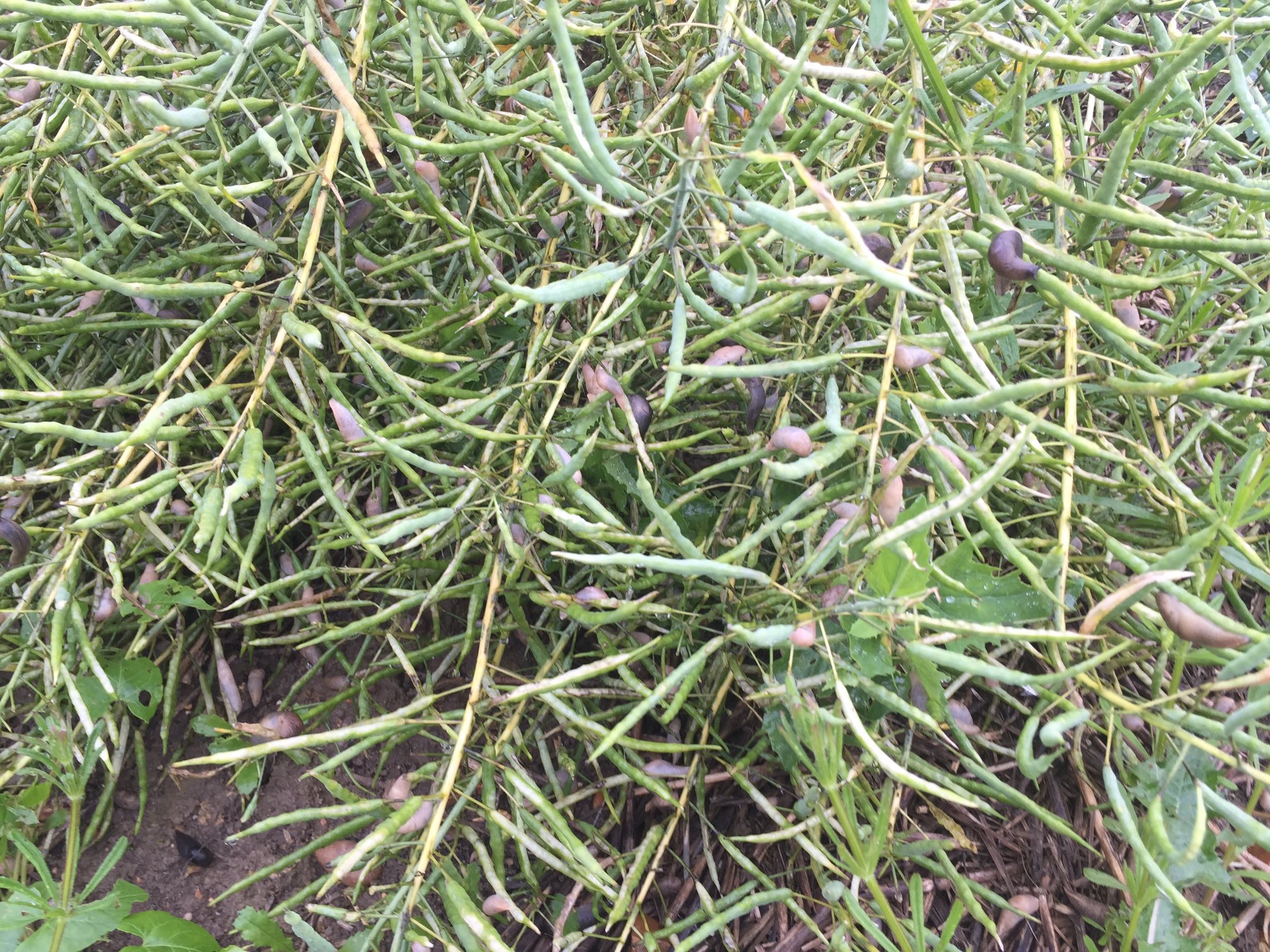
Favourable conditions at peak breeding times, coupled with a dampish summer mean there are already high numbers of slugs being seen in crops.
Photo courtesy Ed Salmon
Slug damage is linked to risk, so it’s important to understand the effect soil cultivation strategy and rotation have on this; soil movement reduces slug pressure but min-till and direct drilling both increase slug risk. Overall, cultivation strategy ultimately needs to be weighed up with other factors, such as blackgrass control, and prioritising the highest risk on the farm. On the rotation front, cereal crops following OSR or grass are at most risk from slugs.
Beneficial insects, particularly carabid beetles, have a role to play in slug control so an important part of overall strategy is not to go overboard on pyrethroid use, especially in OSR, because of the knock-on implications to beneficials.7
How can you target control?
When it comes to monitoring for slugs, there’s no substitute for getting out in the field and making regular inspections of traps and crops for signs of activity.
One of the great myths about slugs is that they come into the field from its margins. In actual fact, slugs tend to move in a 5m radius and are already present in the middle of the field, so treating the whole field when thresholds are reached is essential.
Going in early and hard with an overall treatment to dent slug populations is the best strategy, following up with a more targeted approach where needed. One of the lessons learned from 2012 was that using a little-and-often approach wasn’t adequate when slug numbers are high. A better approach is to reduce slug numbers quickly so that the crop can get away and is more able to withstand grazing.
Anticipating problem areas in fields such as clay knolls is the first step towards targeting follow-up treatments. Using tacit knowledge and physically drawing maps is a good start or more detailed mapping of soil types using GPS technology can give a more precise, targeted approach.
How can variable seed rate help?
Once identified, there are cultural controls that growers can also employ in these higher risk areas to mitigate the effects of slug damage. One of these is increasing the seed rate and drilling seed deeper, especially effective at reducing grain hollowing.
Traditionally this would mean a manual adjustment of the drill and practically it’s not possible to pinpoint small areas within fields. Using ‘smart’ technology means that drilling at a variable seed rate according to risk is possible across the whole field, optimising the amount of seed used while increasing seed rate and depth in problem patches. The result is more even crop establishment and a better return on investment.
How can you target pellet use?
The same smart technology can be used to identify areas and apply follow-up pellet treatments only where needed. Apps now exist where agronomists and growers can identify areas where slug populations are high using their iPad or smart phone. This data can then be used to target application of pellets precisely.
Growers drilling OSR on 50cm row spacing using a subsoiler can use precision technology to target pellet application so pellets are only applied within the row, where they’re needed to protect establishing plants from damage.
Establishing need for a treatment follow-up involves leg work, even in a precision system; monitoring crops for slug activity, pellets left on the soil surface from a primary treatment, as well as crop damage symptoms.
Wet-processed pellets should provide about a three-week window of protection in a normal risk season and a second treatment is usually all that’s required to see the crop safely through the risk period.
Precision tools help pinpoint slugs
Precision tools help pinpoint slugs
Essex grower Jeremy Durrant has embraced technology to farm his 1250 ha in the Thaxted area. All farm machinery runs on a controlled traffic system using RTK (Real Time Kinematic), which uses fixed-position base stations to enhance the accuracy of GPS systems. It achieves this by transmitting signals that correct any positioning errors caused by the Earth’s atmosphere.
“We use GPS to map everything on the farm that’s mappable – soil types, nutrient status, seed rates, blackgrass areas, organic matter status and most recently slugs,” he explains.
This season Jeremy Durrant is seeing a ‘massively scary’ number of slugs in crops, describing fields as being under an alien invasion after every bit of rain.
“We’re already monitoring fields for slug activity. Where there’s been intensive grazing, I’m using the iSoyl Scout app on my iPad to log the GPS co-ordinates. We’ll then be able to place slug traps precisely in these areas, where slug activity has been highest, and monitor them more closely.”
An early dent to slug numbers is aimed for by making full use of cultural controls, he explains. “We’ve just bought a stubble rake this spring to scratch the soil, disturbing slug eggs and generally give slugs a bit of a headache.”
The stubble rake works at a high speed so that the tines are vibrating rapidly so the entire soil surface is moved down to a depth of 10mm – sufficient to encourage weed seeds to develop but not so deep as to cause excessive moisture loss.
The tines also spread crop residues evenly across the field and prevent the creation of damp mats of straw which can be safe havens for slug development.
“We then run 12m spring tines at a depth of about 50mm on a controlled traffic system, usually making two passes in front of the 12m Horsch Sprinter drill,” he adds.
“We’re able to use soil maps to vary the seed rate within fields, so we can also use our mapping information to increase the seed rate in any more slug-prone areas.”
The first slug pellet applications may well be at the cultivations stage if slug pressure remains high this autumn, he
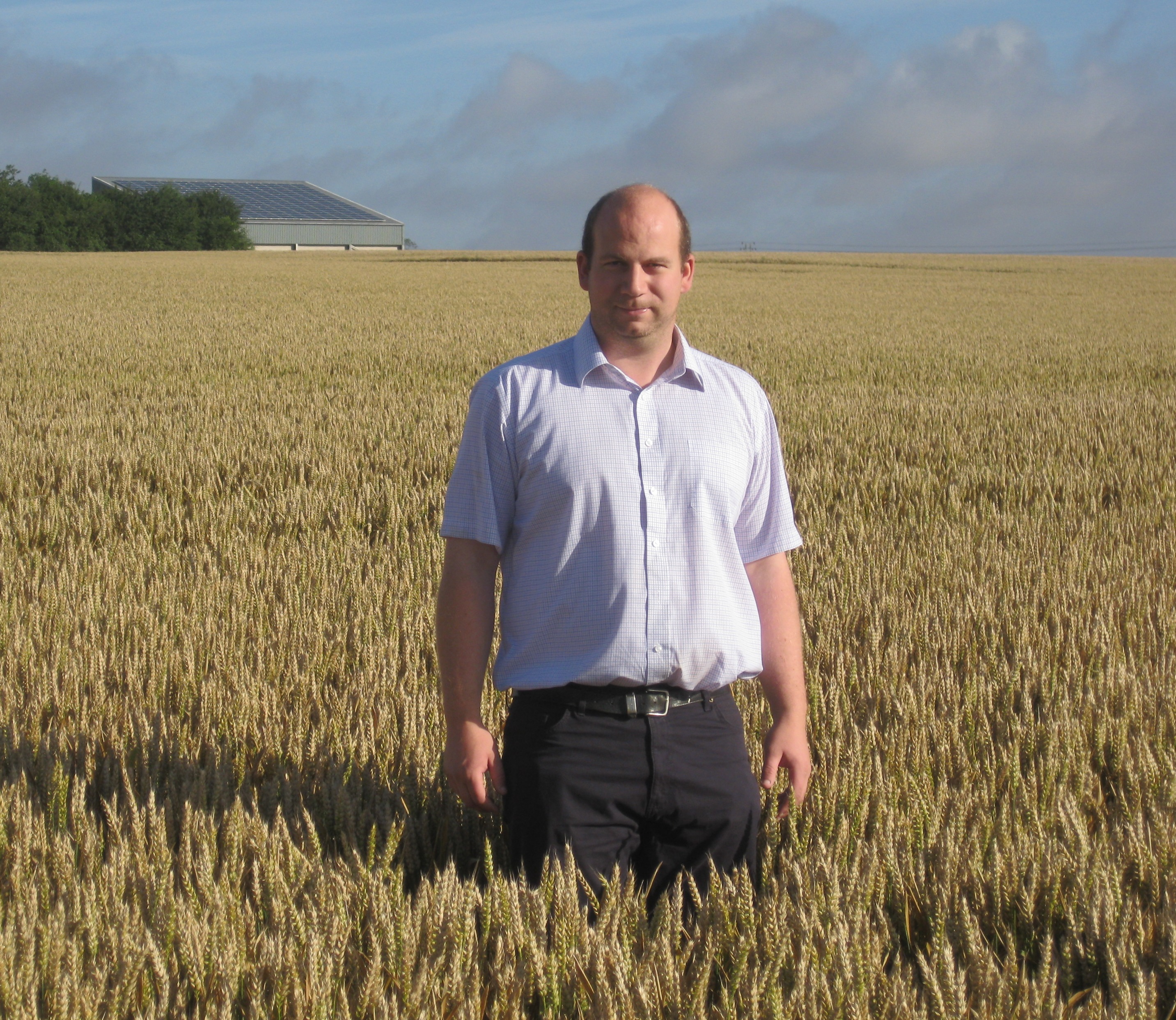
Jeremy Durrant has been monitoring fields for slug activity using the iSoyl Scout app on his iPad
believes. “We use both 1.5% metaldehyde and 3% ferric phosphate on the farm, though the majority is metaldehyde. We’ll be using Sluxx HP (ferric phosphate) in fields which are in areas where water companies have concerns about metaldehyde.
“We’ve historically used a dry-processed metaldehyde pellet but are moving to a wet-processed pellet this season, our reasoning being that they should endure better and remain more palatable under the moist conditions that favour slugs.
“The added number of baiting points offered by mini-pellets is invaluable when slug numbers are as high as they look like being this autumn,” says Jeremy Durrant.
Targeted slug control: top tips
- Understand the risk factors to both the crop and water – in particular previous cropping and drainage pathways.
- Develop and adopt a fully integrated strategy – when it comes to managing slugs, cultural control techniques are crucial.
- Consider relative risks and cost effectiveness – choose active ingredient and formulation type on a field-by-field basis.
Sponsors message
The integration of cultural tactics alongside chemical control options is fundamental to the management of the UK’s number one pest challenge. Precision techniques can also be employed to ensure farm inputs are better targeted, thereby increasing overall productivity. SOYL, a division of Frontier, is the market leader in UK precision crop production and has a number of tools for growers in the battle against slugs. Firstly, using the MySOYL platform, in conjunction with detailed soil maps, variable seed rate plans can be created. These can be used to even up crop establishment based on yield potential and to compensate in areas of the field predisposed to greater slug damage. The same systems can also be used to apply variable rate slug pellets based on pressure levels. SOYL has also recently released the iSOYLScout

